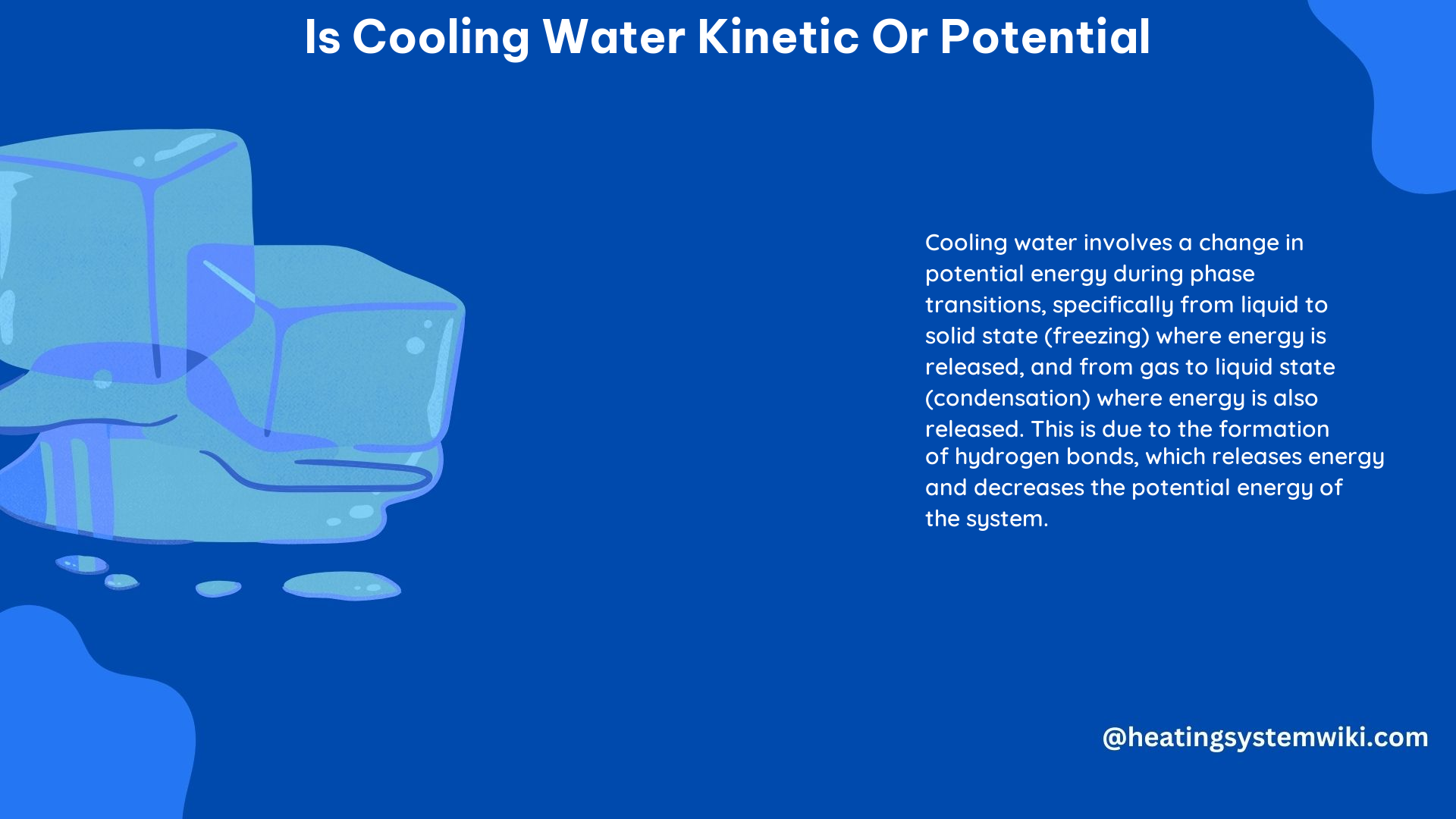Cooling water can exhibit both kinetic and potential energy, depending on the phase and context of the water. The kinetic energy of cooling water refers to the energy of motion of the water molecules, while the potential energy is related to the energy stored in the bonds between the water molecules.
Kinetic Energy of Cooling Water
The kinetic energy of cooling water is directly related to the temperature of the water. As the water is cooled, the average kinetic energy of the water molecules decreases. This is because the water molecules move slower and collide with each other less frequently, resulting in a lower overall kinetic energy.
The kinetic energy of the water can be calculated using the formula:
K = 1/2 mv^2
Where:
– K is the kinetic energy
– m is the mass of the water
– v is the velocity of the water molecules
However, in the context of cooling water, the velocity of the water molecules is usually not directly measured. Instead, the kinetic energy is often expressed in terms of temperature using the formula:
K = 3/2 nkT
Where:
– n is the number of water molecules
– k is the Boltzmann constant
– T is the absolute temperature of the water
This formula allows the kinetic energy of the cooling water to be estimated based on the measured temperature.
Potential Energy of Cooling Water

The potential energy of cooling water is related to the energy stored in the bonds between the water molecules. As the water cools and undergoes a phase change, such as from liquid to solid (ice), the potential energy of the water increases.
When water freezes, the water molecules form a crystalline structure, and the bonds between the molecules become more ordered and stable. This increase in potential energy is reflected in the energy required to break the bonds and melt the ice back into liquid water.
The potential energy of the water can be measured by comparing the energy required to break the bonds between the water molecules in different phases. For example, the energy required to melt ice is higher than the energy required to heat liquid water, indicating that the potential energy of the water increases during the phase change from ice to liquid.
Technical Specifications of Cooling Water
The technical specifications of cooling water depend on the application and the desired properties of the water. In cooling towers, for example, the water is often treated with chemicals to prevent corrosion, scaling, and biological growth. The water quality specifications may include parameters such as pH, alkalinity, hardness, and conductivity, which can affect the efficiency and longevity of the cooling system.
In industrial processes, the cooling water may be recycled and reused, which requires careful monitoring and treatment to ensure that the water quality remains within acceptable limits. The design of the cooling system can also affect the kinetic and potential energy of the water, with factors such as flow rate, pressure drop, and turbulence influencing the heat transfer and energy consumption of the system.
References
- Can kinetic energy be converted into cooling?
- Heating and Cooling Curves and Potential vs Kinetic Energy – Quizlet
- Kinetic & Potential Energy of 0° Ice/Water: Examined – Physics Forums
- 2.5 Heating/Cooling Curves (Potential and Kinetic Energy Changes)
- Heating and Cooling Curve / Introduction plus Kinetic and Potential …
